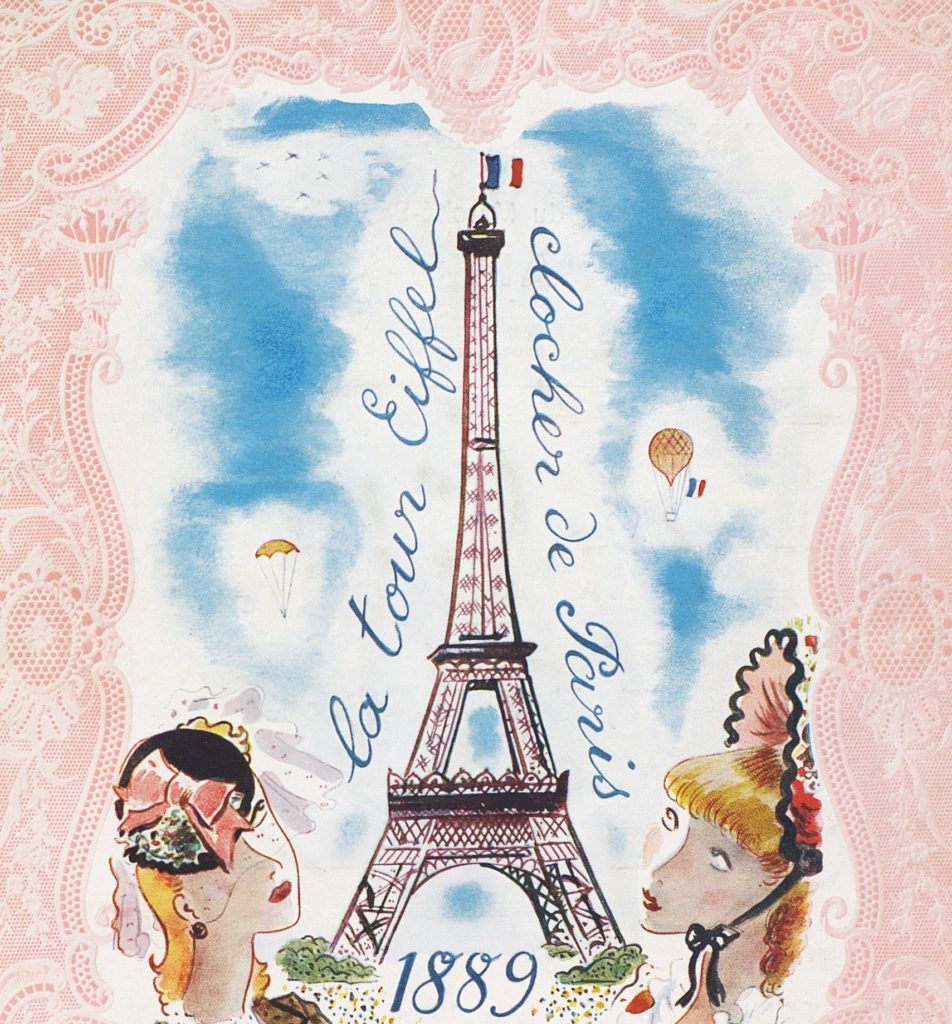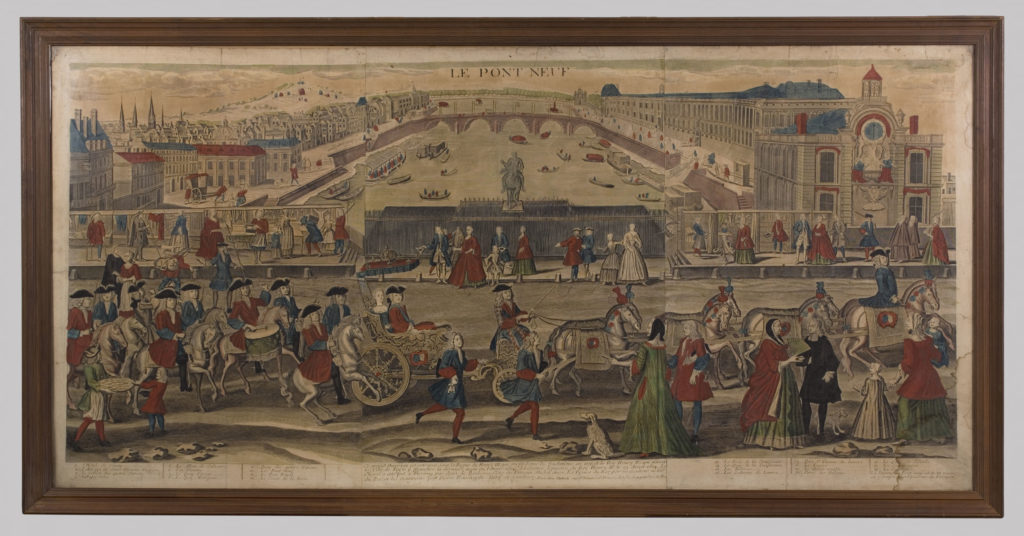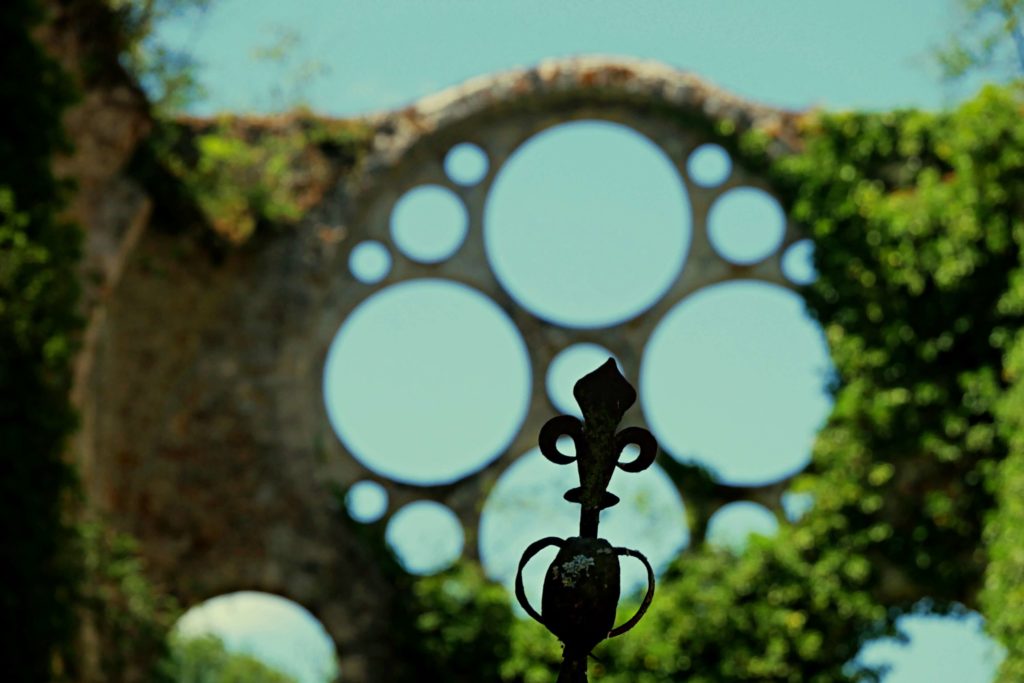High on a sandy hill, tucked comfortably amongst the fragrant pine trees and looking over the breathtaking Bassin d’Arcachon, is the Ville d’Hiver, or Winter Town. An eclectic mix of ornate brick mansions, limestone houses and swiss style chalets, it’s a must-see on your visit to Arcachon. The tree-lined streets offer shade and serenity, and as you take a walk along the quiet streets, the exquisitely decorated facades of every colour are a window into the past.
A little bit of history
When a new train line from Bordeaux to Arcachon opened in 1855, wealthy Parisians packed their suitcases full of summer clothes, took their hats and parasols and made their way to the coast. Not only was the Arcachon Basin a beautiful stretch of soft, white sand, perfect for dabbling your toes, but a month or so in the invigorating sea air did wonders for ones’ health. It was not long before the small town of Arcachon became a well known station balnéaire, or bathing resort.
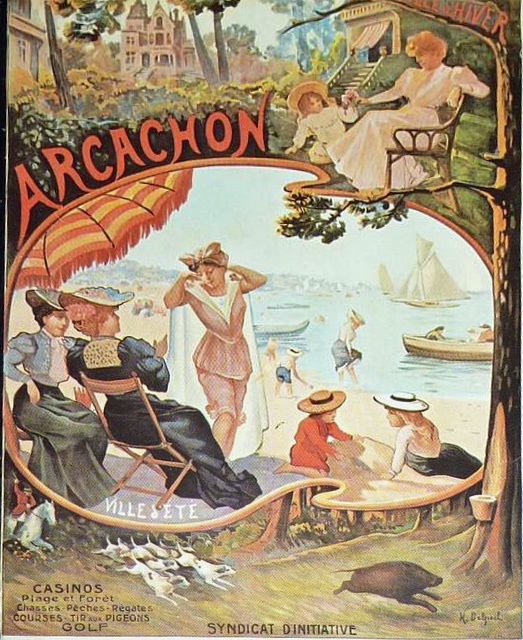
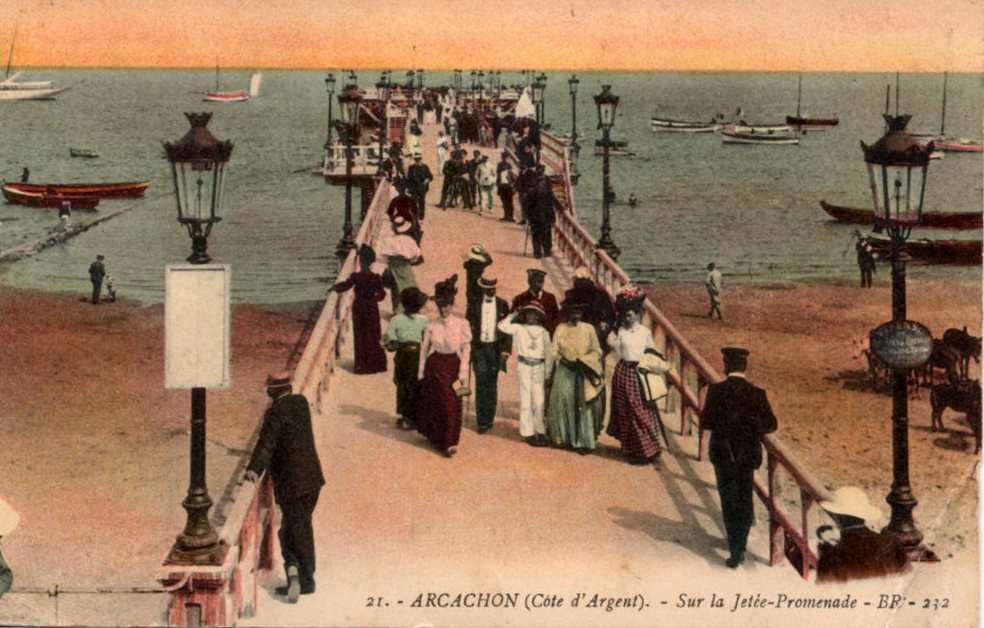
But it wasn’t only the bourgeoisie who craved the coastal life; in the absence of penicillin and other medical marvels, fresh air was believed to be a cure for many illnesses, but mostly tuberculosis. Usually referred to as ‘consumption’ in the 19th century, this wasting disease had no cure until French bacteriologists created a vaccine in 1921. Before this, the sick were sent to various sanitoriums; or if they were wealthy, to Switzerland.
And so, an opportunity was created – bring Switzerland to the southwest coast of France, and the sick would follow. A large area of land at the highest point of Arcachon was chosen, and in the 1860s a housing estate like no other was born. The coastal sand dunes were the Swiss mountains, the pine trees the ubiquitous and verdant firs, and the newly built, colourful houses the traditional chalets. The style of architecture soon became known as ‘Arcachonnaise’.
The walking tour
Take a stroll along the leafy streets of the Ville d’Hiver and you’ll feel you’ve travelled back to the Belle Époque, because the houses are seriously stunning. But there’s something you won’t be expecting – almost all of these stylish homes have names engraved or plastered onto the facade. They range from the simple, like Stella, Bianca or Blanche, to the eloquent, such as the Villa Rhapsodie and Girofle. There’s also a Saf-Saf, a Pomme-du-Pin (pine cone), and a Baby Chou.






Numbering in the hundreds, and now exclusive real estate which fetch millions of euros, the houses were built over a 30 year time period and it was only when they ran out of space they halted production. These ‘Swiss chalets’ have evolved over time, but many of the houses have kept their original exposed beams and decorative carvings. Ornate balconies and large windows, restorative to the sick, are a common feature.
Aleaxandre Dumas visits Arcachon
With the best views of the sun drenched bassin from the top of its Italianate belvedere, one of the most beautiful mansions is named after the famous French writer Alexandre Dumas. But contrary to popular belief, he did not spend any time in the house. In fact, it was built well after his death. Dumas made a brief visit to Arcachon in the summer of 1865, where he was feted and celebrated by the town who were honoured by his presence.
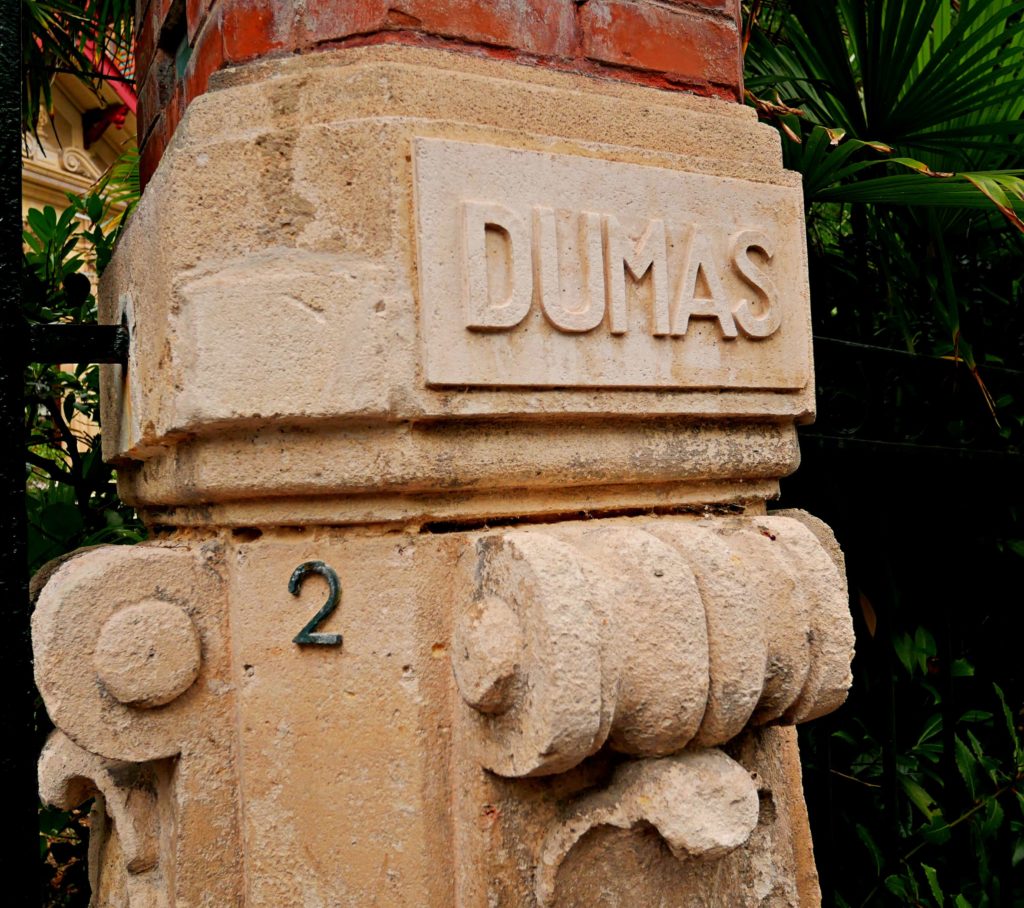
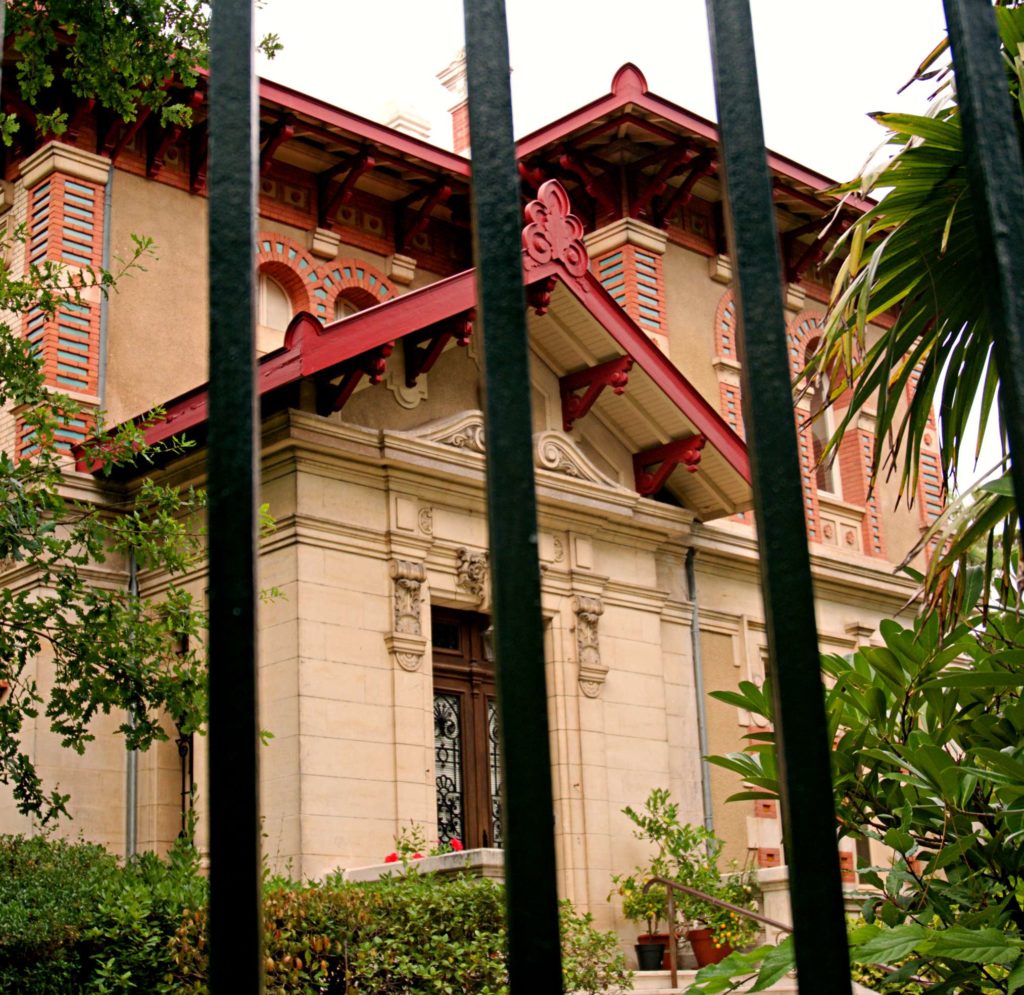
Originally called Osiris, the house was built in 1895 and purchased by Daniel Iffla, a successful but somewhat eccentric merchant banker who had decided to officially change his own surname to Osiris. His apparent motive in buying this highly stylised château was its donation to the town of Arcachon for a public library – names of writers are engraved onto bricks on the exterior of the house. This was not to be, however, as he decided to leave all his wealth and possessions to the Pasteur Institute instead. The villa was renamed Alexandre Dumas in 1907.
Villa Sigurd


Another well known face on the walking circuit is Villa Sigurd, one of the earliest mansions built in the 1860s. At its inception it greatly resembled a chalet you might see on the ski fields of the Alps, but by the end of the century its facade had been embroidered and embellished. It first answered to the name ‘Nadine’, who is now lost forever to history; was later changed to ‘Shakespeare’, then ‘Vélasquez’, and finally to Sigurd, after the mythical Nordic hero.
The Villa Téresa

Surrounded by a large garden, the Villa Téresa made its appearance in the Winter Town in 1882, first owned by an Irish painter known only as Mr Lewis. It had several owners over the course of half a century, including the Sultan of Morocco in 1921, but abandoned, it soon fell into ruins. We can admire its tall, red brick walls capped by limestone today only because it was saved from demolition and placed on the list of Monuments historiques in 1980.
What else is there to see?
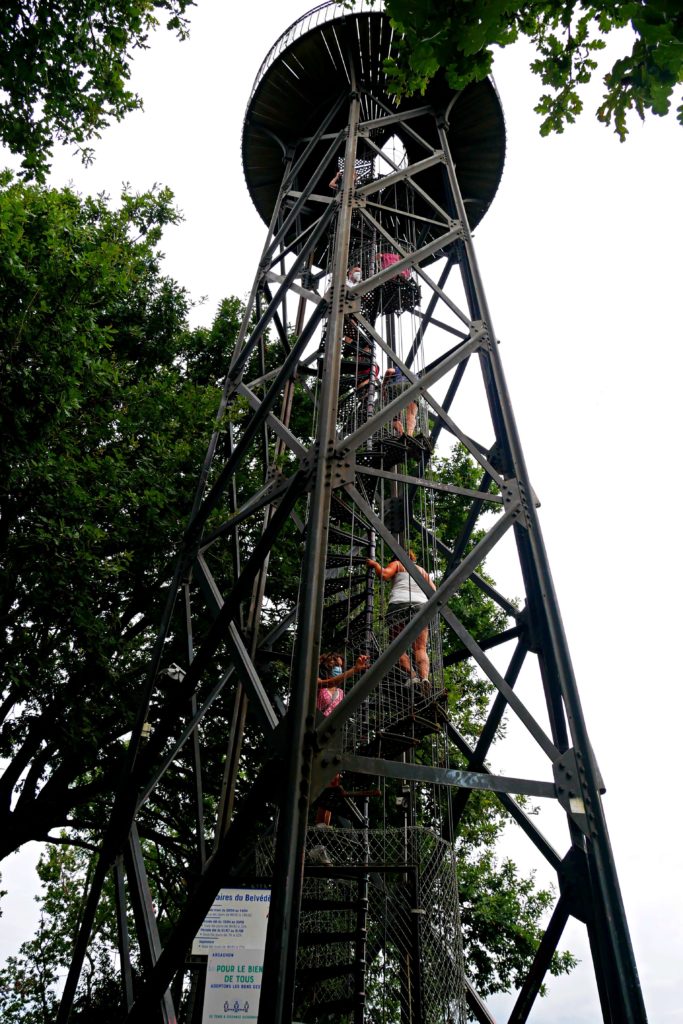
For a magnificent view of the Bassin d’Arcachon and the forests of the Lande, the Saint-Cécile Observatory is a 25 metre high iron tower. To reach the top, scale an impressive spiral staircase which winds its way up through the interior. Be prepared for a windy summit (and a queue on a weekend).
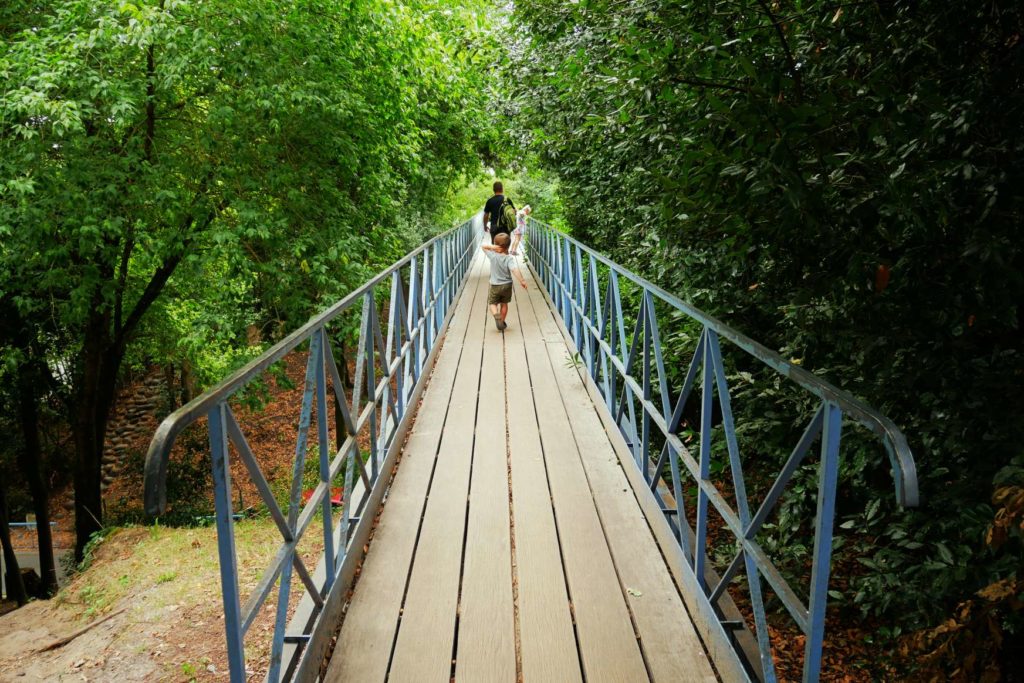
One way to access the Observatory is by clambering up a set of rounded stone steps (the way my toddler decided to go); the other, more accessible path is over the Passerelle Saint-Paul. This 32 metre long walkway traverses the steep gorge between two sand dunes. Both the Observatory and the Passerelle date back to 1862-3.
But the Passerelle has its own claim to fame – one of the engineers involved in its construction was a young Gustave Eiffel, who would, much later, go on to build what is probably the most recognisable structure in the world.
The generous and green space which is Parc Mauresque dates back to the earliest days of the estate. Today it’s a haven of serenity, and a lovely wander through ancient trees and a modern rose garden. It’s here you can leave winter behind you and descend into summer: the Ville d’été (summer town) sits below, facing the waterfront. There was once a funicular train here for the steep climb from summer to winter town; now there’s a lift, which takes you through the site of the grand casino which burnt down in 1977.

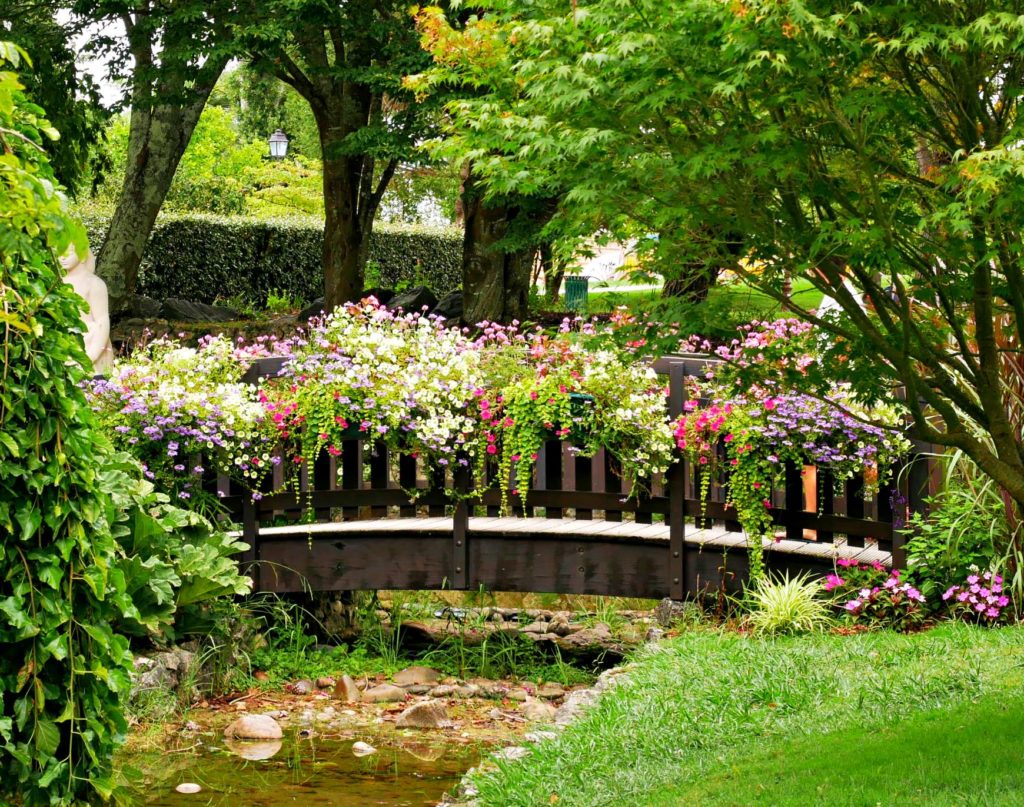
Where to finish your visit
When you’ve finished your walk along the elegant streets of the Ville d’Hiver, here are some other things to do on your visit to Arcachon.
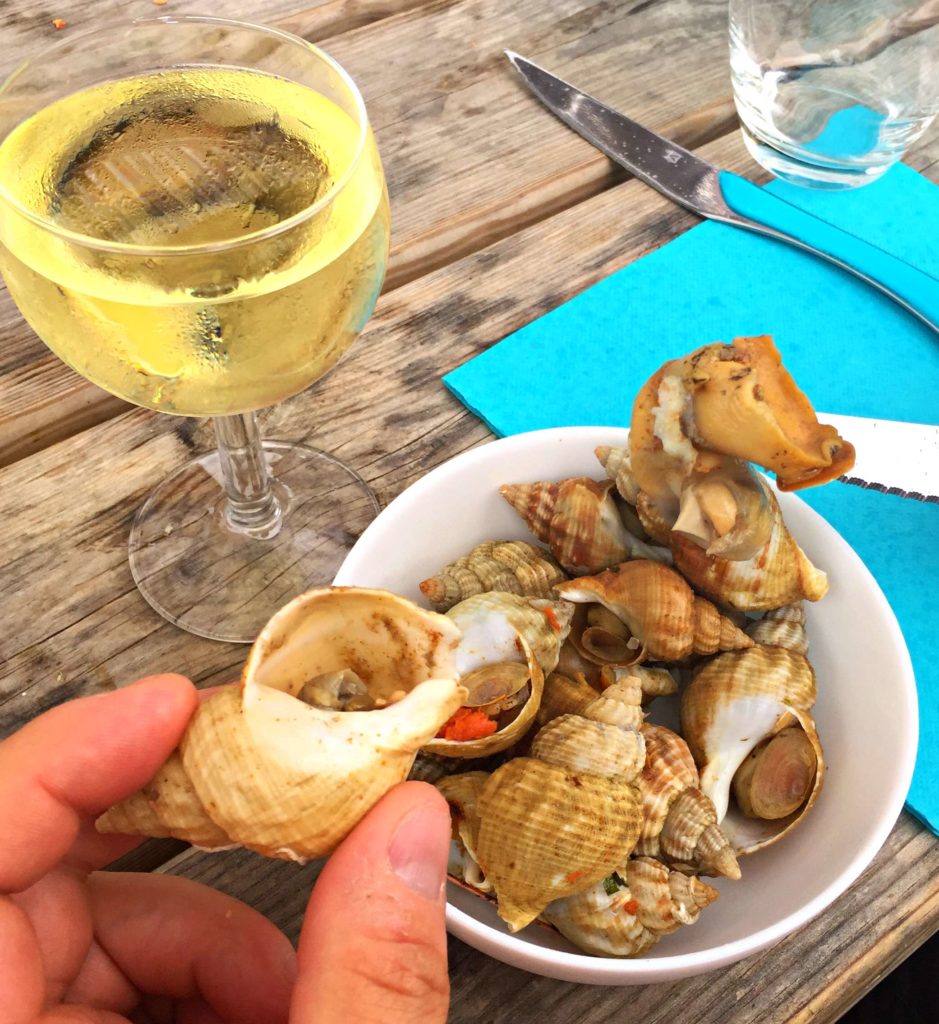
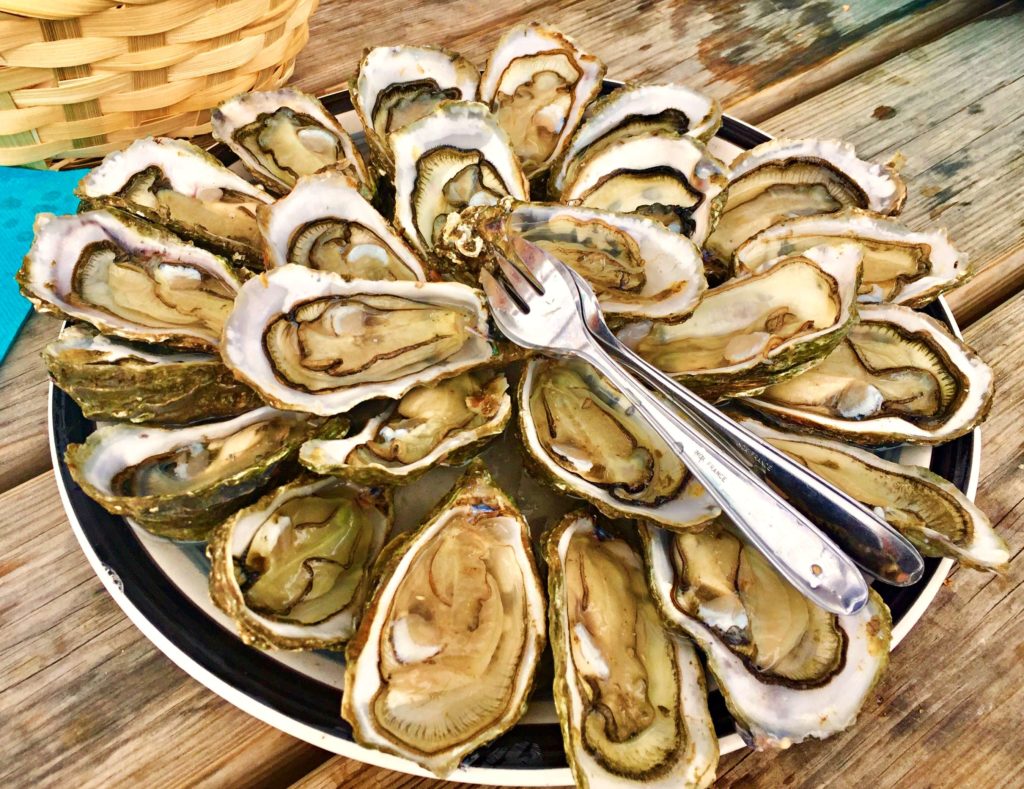
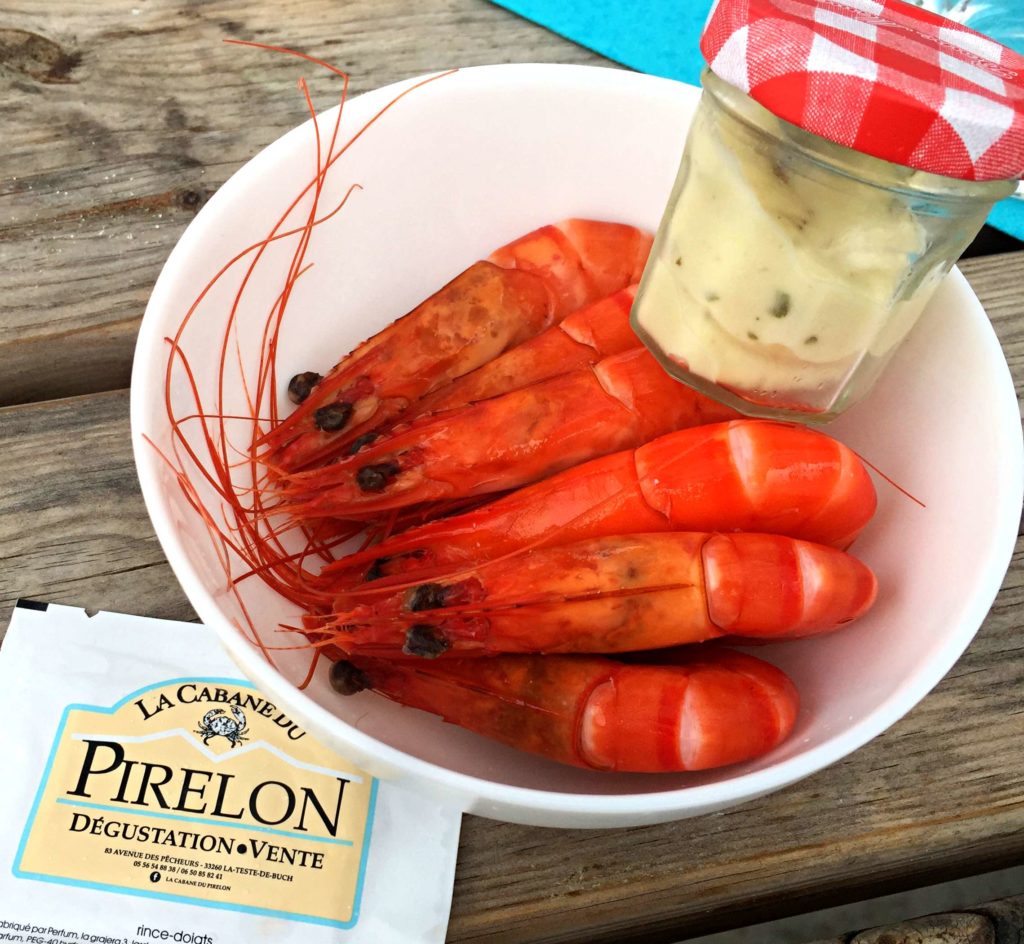
Eat oysters freshly picked from the sea for lunch or dinner at one of the many cabanes along the estuary, at the Avenue des Pécheurs. We enjoyed a sumptuous meal of oysters, bulots (sea snails) and crevettes with fresh bread and wine at La Cabane du Pirelon.
To work off all those oysters, a short drive away is the Dune du Pilat, the highest sand dune in Europe. It’s a steep climb to the top, but the views across the Bassin d’Arcachon and Cap Ferret are magnificent. And it’s great fun to run/roll/slide to the bottom of the dune.
Useful links
The official tourism website has loads of great information about what to visit in Arcachon.
If you’d like to read more on the houses of the Ville d’Hiver, this site (in French) shows plans and original pictures of many of the 300 homes.
What about buying one of these beautiful homes currently for sale in the Ville d’Hiver?
Have you been to the Ville d’Hiver or to Arcachon? If not, I hope I’ve inspired you to visit there.
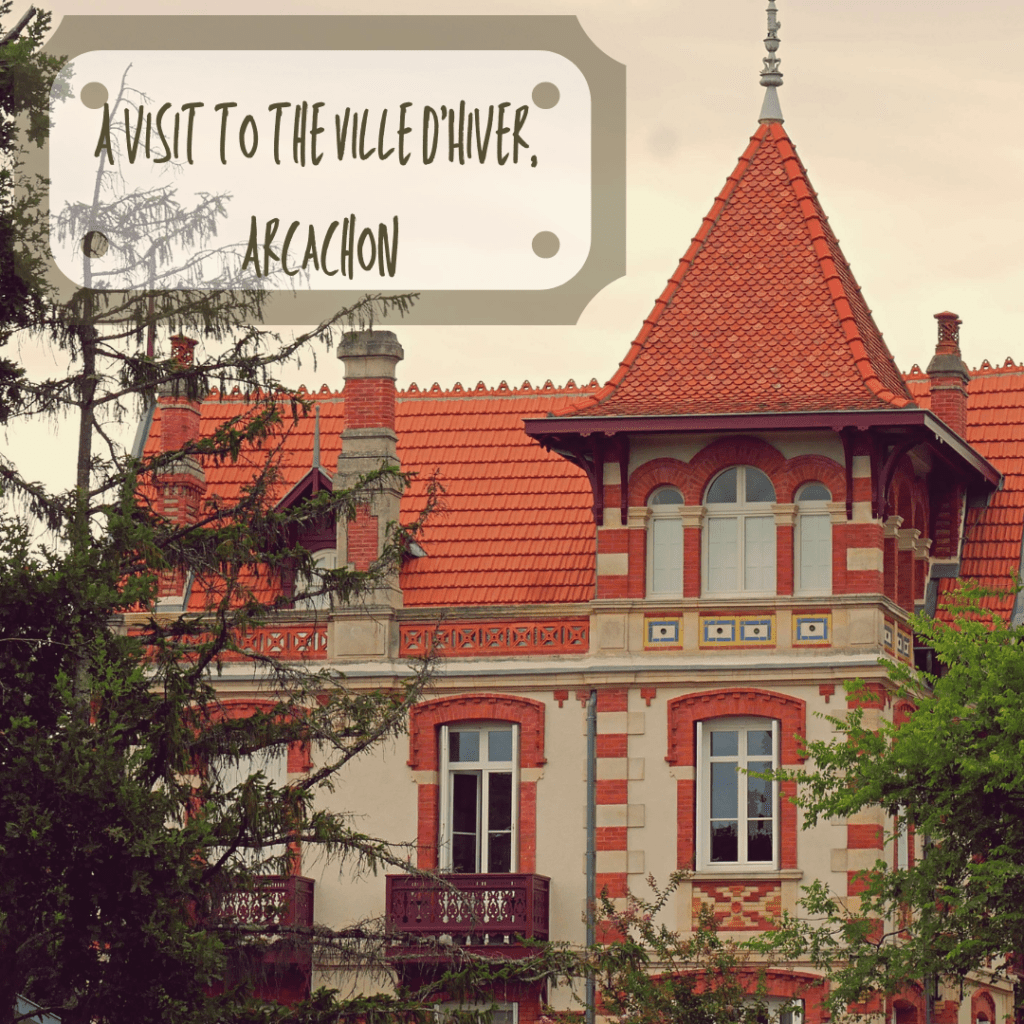
Unless stated otherwise, all photos remain the property of Madame Mélissande.
